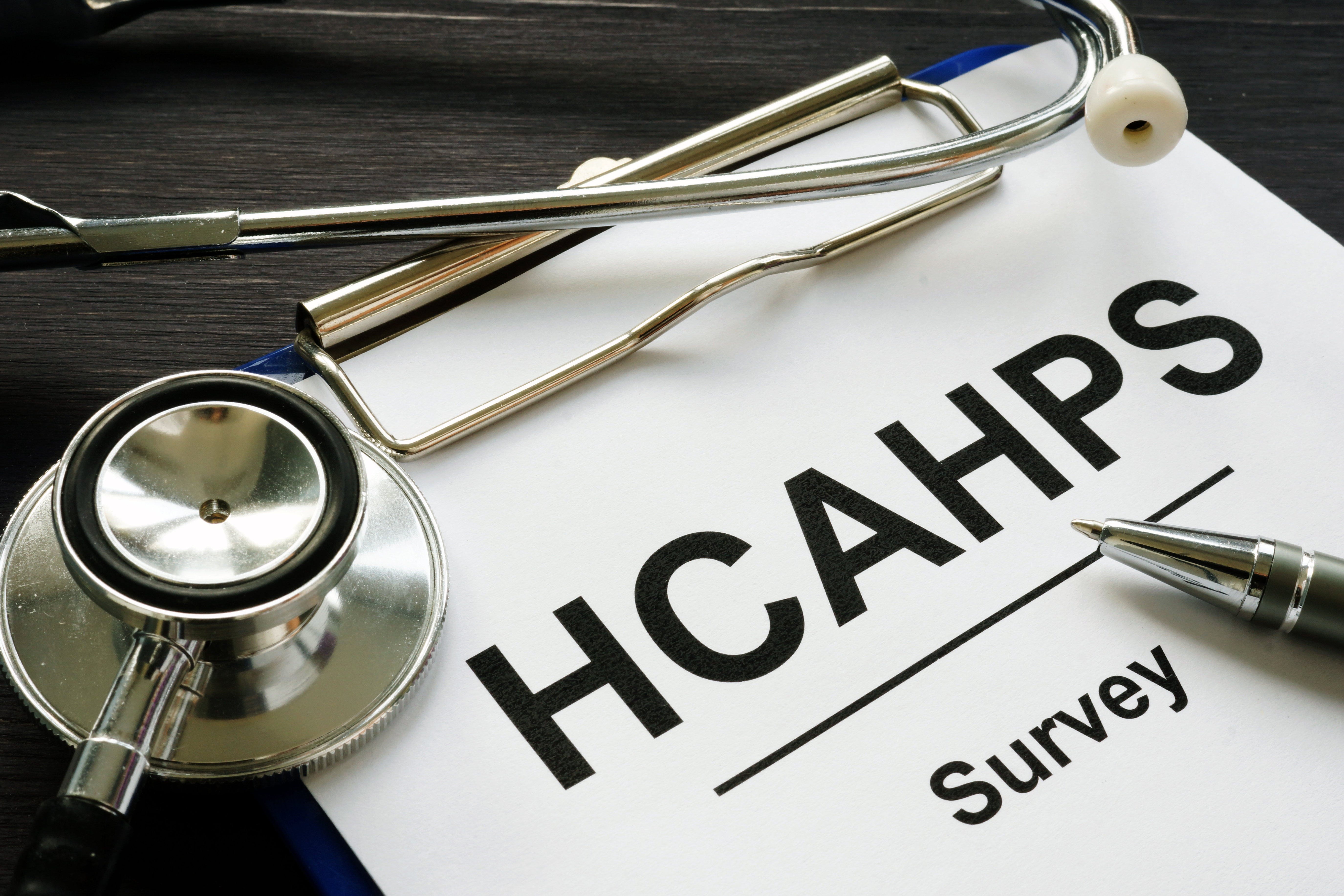The Benefits of Patient Satisfaction | Curogram Blog
Physicians and other healthcare providers have always been concerned with the well-being of their patients. While satisfaction contributes to patient...

HCAHPS surveys measure your patients' perspectives of their care experience with hospitals. We offer five ways to improve your HCAHPS score.
Patients' perspectives of their care experience are as significant as inpatient care and post-discharge outcomes. That is why since 2002, hospitals have used HCAHPS survey results to monitor and measure patients' satisfaction with their hospital care experience.
Since then, HCAHPS scores have become a critical performance metric that hospitals work hard to improve on. It is a challenge hospitals have taken up, especially since these results have wide-reaching effects from patient outcomes to reimbursement.
What must hospitals do to earn high patient satisfaction scores in a challenging setting where respondents experience pain and possibly undergo unwanted treatment and their families are likely in an uncomfortable situation?
The first step is understanding what HCAHPS is, the methodology, and why those scores are so important.
HCAHPS (Hospital Consumer Assessment of Healthcare Providers and Systems) survey is a data collection method and publicly-reported national survey instrument for measuring patients' hospital experience perceptions.
The HCAHPS survey is the national standard for collecting and public reporting of patient experience of care information.
In 2002, the Centers for Medicare and Medicaid Services (CMS) partnered with the Agency for Healthcare Research and Quality (AHRQ) to develop and test the HCAHPS survey. AHRQ carried out the necessary processes such as numerous tests, interviews, and extensive analyses, among relevant measures to ensure the survey’s quality and accuracy.
The HCAHPS survey was born out of three general objectives that serve as guiding posts to the questionnaire:
The HCAHPS survey contains 29 questions. Discharged patients answer these questions related to their recent hospital stay or treatment.
There are nineteen core questions related to the critical aspects of the patient's hospital experiences. It includes communication with nurses and doctors, hospital staff responsiveness, quiet environment, cleanliness, medicines, discharge information, general hospital rating, and whether they would recommend the hospital.
The additional questions cover congressionally mandated reports and adjust for the mix across hospitals.
The survey targets a random sample of adult patients across medical conditions between 48 hours and six weeks after discharge. The survey does not restrict coverage to Medicare beneficiaries.
The HCAHPS surveys are completed via mail, telephone, telephone follow-up, or active, interactive voice recognition (IVR).
The survey, sampling, data collection and coding, and file submission are in the current HCAHPS Quality Assurance Guidelines, available on the official HCAHPS website.
Hospitals have been collecting patient satisfaction data for years. HCAHPS formalizes the process and creates incentives for improvement. CMS uses these scores for more than measuring hospital effectiveness. CMS rewards hospitals with Medicare reimbursements based on the quality of care, adherence to best clinical practices, and patient care experience enhancement.
With HCAHPS surveys, this information is now public and available for anyone who wants to access it for an informed health care provider comparison via the Hospital Compare database.
As a consumer does with online reviews, patients may use these HCAHPS scores to help them choose among healthcare providers or hospitals. In other words, HCAHPS scores are like online ratings that influence consumers' buying preferences or patients' hospital preferences in this case.
It is because HCAHPS scores have shown to have a relationship to favorable outcomes for patients. For example, hospitals with low rates of readmission and shorter length of stay would also have higher patient satisfaction.
If you are into the business of providing health care, then the HCAHPS score is a vital resource you need to keep an eye on to keep you on the right track or take you to lead the industry.
Once you understand the HCAHPS survey and recognize its value, the next step is identifying and implementing changes to boost your scores.
Consider these five ways to improve your HCAHPs survey score.
Improving your HCAHPS score is directly linked to increasing overall patient satisfaction relative to how they perceive the quality of your healthcare services.
Your hospital may have a line-up of competent professionals and staff coupled with advanced technology. However, these may not translate into patients' perceptions of satisfaction effectively. Patients' perspectives on care satisfaction mainly reflect how health care providers treat and manage their patients’ needs.
The missing component is a service delivery model that emphasizes the patient's participation, preferences, values, and decisions in the healthcare setting — the patient-centric approach.
The patient-centric model optimizes care operations to improve efficiency, efficacy, and service quality by empowering patients and promoting collaboration and trust with their providers.
An integrated patient-centric approach streamlines and simplifies hospital operations that offer beneficial outcomes such as cost reductions, staff satisfaction, and, most importantly, improved patient care quality.
Suppose your hospital has not yet integrated a patient-centric approach into its system or has only one department implementing the model. In that case, it is high time to consider it seriously, now!
This way, not only patient-facing personnel and patient-concerned departments attune themselves to the elements of this holistic approach. The benefits of the model extend and spread out to the entire hospital system.
When hospitals run as a patient-centric institution, operations and protocols will change following the healthcare model. It brings out its benefits and its desired impact on patients, their families, and healthcare workers.
Integrating a patient-centered model helps you maintain a
positive and happy healthcare environment for all stakeholders. Such an atmosphere will immediately radiate on patients the first moment they step into your facility.
As their journey with you moves on, they experience attentive and personalized care and treatment.
The HCAHPS survey encourages hospitals to emphasize patient experience and engagement as critical aspects of health care delivery. It means that healthcare providers can increase their scores by communicating frequently and clearly with their patients.
It may sound slightly exaggerated, but patients' perception of your care quality begins on the first day they set foot at your hospital. It is therefore imperative to communicate with your patients regularly, and as days pass, more frequently.
Communication is the key to the patient-centric approach and consequently to a satisfied patient. Informing patients, for example, of what is happening and what will happen to them will ease their worries and increase their confidence in their providers.
In the same way, gathering direct feedback from patients and their families forms a reliable basis for improving care and total patient experience.
Patient-centric health communication is a two-way process. It requires providers to acquaint patients with relevant information about their condition and ask their feelings, thoughts, and suggestions. The latter is mainly being overlooked or ignored in the past. However, with a patient-centric model, providers are highly encouraged to listen and carefully note patients' expressed sentiments.
The more often you communicate with your patients, the more collaborative they become, and the more information you get about them. With more information about your patients, you become more equipped and more effective in providing health care.
Considering the significance of constant patient communications, it is also important for hospital staff and physicians to communicate internally with a secure and easy-to-use platform.
As health care institutions are in the business of care delivery and are primarily a personnel-intensive information industry, it is best to support it with an information system that fully integrates all patient health information when optimizing operations.
A secure communications platform to streamline and support hospital operations will improve coordination and save more time for staff, nurses, and physicians. Consequently, it will complement and improve communication with patients.
Awareness results in conscious actions. If the whole healthcare workforce is aware of the HCAHPS, its goals, mechanisms, and the items in the survey, you can expect a satisfactory level of participation from them.
Trained hospital personnel on patient satisfaction allows a smooth transition to the integration of the patient-centric model.
You are training your hospital staff to increase synchronized and optimized hospital operations.
Action speaks louder than words. If this is true, whatever it is that you are communicating with your patients, they should also feel and acknowledge it.
This could also have a positive effect on your HCAHPS survey score. There is no other better way to communicate with your patients than to make them feel they are taken care of very well and provided the best healthcare they deserve.
Actual patient experience with your care services is a significant contributor to their perceptions. Moreover, it would not matter to patients, regardless of what you say about being comfortable, for example, when they do not truly feel it.
For example, noise is among the elements that irritate patients. Comforting words or outstanding medical treatment don’t eliminate hospital noise. Take action to create a quiet and tranquil environment wherever possible, or minimize the hospital noise you can control.
Generating a high HCAHPS score may sound like a challenging task. However, as long as you put patients at its core, the task is rewarding. You know that it improves patient outcomes, patient satisfaction, and the overall operations and clinical care at your facility — review your scores and identify the areas that could improve today.

Physicians and other healthcare providers have always been concerned with the well-being of their patients. While satisfaction contributes to patient...

Practice management models and software are becoming more accessible and efficient than ever before. Thanks to the emergence of patient-centric...

Healthcare professionals (HCPs) have long sought and struggled to assess and improve healthcare quality in the United States. The Agency for...